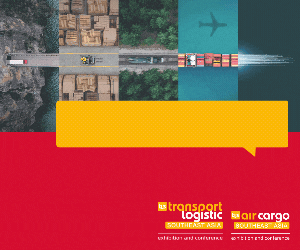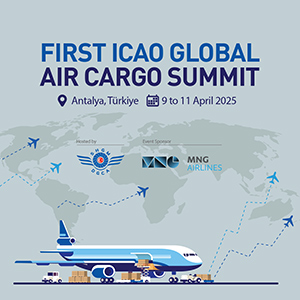- Global demand, measured in cargo tonne-kilometers (CTKs*), fell 5.2% compared to March 2021 (-5.4% for international operations).
- Capacity was 1.2% above March 2021 (+2.6% for international operations). While this is in positive territory, it is a significant decline from the 11.2% year-on-year increase in February. Asia and Europe experienced the largest falls in capacity.
- Several factors in the operating environment should be noted:
- The war in Ukraine led to a fall in cargo capacity used to serve Europe as several airlines based in Russia and Ukraine were key cargo players. Sanctions against Russia led to disruptions in manufacturing. And rising oil prices are having a negative economic impact, including raising costs for shipping.
- New export orders, a leading indicator of cargo demand, are now shrinking in all markets except the US. The Purchasing Managers’ Index (PMI) indicator tracking global new export orders fell to 48.2 in March. This was the lowest since July 2020.
- Global goods trade has continued to decline in 2022, with China’s economy growing more slowly because of COVID-19 related lockdowns (among other factors); and supply chain disruptions amplified by the war in Ukraine.
- General consumer price inflation for the G7 countries was at 6.3% year-on-year in February 2022, the highest since 1982.
- The war in Ukraine led to a fall in cargo capacity used to serve Europe as several airlines based in Russia and Ukraine were key cargo players. Sanctions against Russia led to disruptions in manufacturing. And rising oil prices are having a negative economic impact, including raising costs for shipping.
“Air cargo markets mirror global economic developments. In March, the trading environment took a turn for the worse. The combination of war in Ukraine and the spread of the Omicron variant in Asia have led to rising energy costs, exacerbated supply chain disruptions, and fed inflationary pressure. As a result, compared to a year ago, there are fewer goods being shipped—including by air. Peace in Ukraine and a shift in China’s COVID-19 policy would do much to ease the industry’s headwinds. As neither appears likely in the short-term, we can expect growing challenges for air cargo just as passenger markets are accelerating their recovery,” said Willie Walsh, IATA’s Director General.
| |||||||||||||||||||||||||||||||||||||||||||||||||
1 % of industry CTKs in 2021 2 Change in load factor 3 Load factor level |
March Regional Performance
- Asia-Pacific airlines saw their air cargo volumes decrease by 5.1% in March 2022 compared to the same month in 2021. Available capacity in the region fell 6.4% compared to March 2021, the largest drop of all regions. The zero-COVID policy in mainland China and Hong Kong is impacting performance.
- North American carriers posted a 0.7% decrease in cargo volumes in March 2022 compared to March 2021. Demand in the Asia-North America market declined significantly, with seasonally adjusted volumes falling by 9.2% in March. Capacity was up 6.7% compared to March 2021.
- European carriers saw a 11.1% decrease in cargo volumes in March 2022 compared to the same month in 2021. This was the weakest of all regions. The Within Europe market fell significantly, down 19.7% month on month. This is attributable to the war in Ukraine. Labor shortages and lower manufacturing activity in Asia due to Omicron also affected demand. Capacity fell 4.9% in March 2022 compared to March 2021.
- Middle Eastern carriers experienced a 9.7% year-on-year decrease in cargo volumes in March. Significant benefits from traffic being redirected to avoid flying over Russia failed to materialize. This is likely due to subdued demand overall. Capacity was up 5.3% compared to March 2021.
- Latin American carriers reported an increase of 22.1% in cargo volumes in March 2022 compared to the 2021 period. This was the strongest performance of all regions. Some of the largest airlines in the region are benefitting from the end of bankruptcy protection. Capacity in March was up 34.9% compared to the same month in 2021.
- African airlines saw cargo volumes increase by 3.1% in March 2022 compared to March 2021. Capacity was 8.7% above March 2021 levels.
































Türkçe karakter kullanılmayan ve büyük harflerle yazılmış yorumlar onaylanmamaktadır.